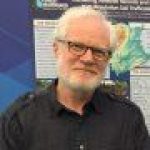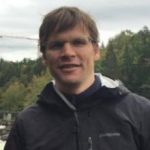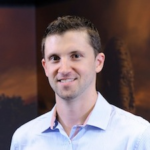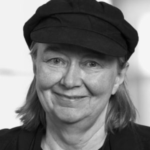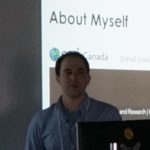School of Interactive Arts and Technology (SIAT), Simon Fraser University
CREATE DAV Bootcamp 2016
Title: The cognitive science of visual analytics
Abstract:
The solution to this problem lies in the creation of a translational cognitive science of interaction, AKA a cyberpsychology. This begins with studies of ”cognition in the wild”, continues with laboratory studies of the ways in which the novel perceptual and interactive environments that are generated by complex visualization environments affect human perception, cognition, action and collaboration and ends with translational field experiments that integrate theory and methods from lab studies into semi-realistic tasks and settings to inform visualization design choices and evaluation metrics.
Department of Computer Science, University of Illinois at Urbana-Champaign
CREATE DAV Bootcamp 2016
Title: Mining Structures from Massive Text Data: A Data-Driven Approach
Abstract:
Department of Electrical Engineering and Computer Science, York University
CREATE DAV Bootcamp 2016
Title: Color and Commodity Cameras: The Good, the Bad, and the Ugly
Abstract:
Digital Design and Media Arts , University of Canberra
CREATE DAV Bootcamp 2016
Title: Perceptual Design and Big Data
Abstract:
Environmental & Geodetic Engineering, The Ohio State University
CREATE DAV Bootcamp 2016
Title: Geolocalization: Motion Mining Strategy via Knowledge Discovery
Abstract:
Business Development, Ontario Centres of Excellence (OCE)
CREATE DAV Bootcamp 2016
Title: Programs at OCE
Intellectual Property management, Norton Rose Fulbright Canada
CREATE DAV Bootcamp 2016
Title: Intellectual Property and Research Commercialization
Client Services, ventureLAB
CREATE DAV Bootcamp 2016
Title: Entrepreneurial Thinking – what it takes to launch a successful startup
Commercialization, Innovation York, Office of Research Services, York University
CREATE DAV Bootcamp 2016
Title: Innovation York: Commercialization
Entrepreneurship, LaunchYU, Office of Research Services, York University
CREATE DAV Bootcamp 2016
Title: Innovation York: Entrepreneurship
Education and Research, Esri Canada Limited
CREATE DAV Summer School 2017
Title: A workflow for 3D campus model construction with a view to geodesign and crowd modelling scenarios
Abstract:
Design, Bluedot
CREATE DAV Summer School 2017
Title: Data Visualizations for a Healthier and Safer World: Making Sense of Global Epidemics
Abstract:
In today’s highly connected world, the global population has become increasingly vulnerable to infectious disease and the health, economic, and security impacts of epidemics. In this talk, we will look at some of the ways geospatial data visualizations have contributed to preventing, detecting, and mitigating a number of today’s most pressing global health issues by supporting both insight-generating analytics and knowledge translation.
Globe Labs, The Globe and Mail
CREATE DAV Summer School 2017
Title: When design meets data
Abstract:
Healthcare Strategy, QoC Health
CREATE DAV Summer School 2017
Title: Co-designing healthcare technology solutions with patients and providers
Complex Systems Research Group, Autodesk Research
CREATE DAV Summer School 2017
Title: Dissecting and Mapping Human Anatomical Form
Faculty of Computer Science, Dalhousie University
CREATE DAV Bootcamp 2017
Title: Data Analytics on Ocean Vessels Trajectories: the case of AIS data.
Abstract:
In this presentation, we will describe the satellite Automatic Identification System (s-AIS)– a fundamental tool for the analysis and understanding of the mobility of ocean vessels. We will describe the AIS system, argue that AIS data meets all the Big Data characteristics, and introduce the challenges it presents. We will then present the work at Dalhousie on the use of Machine Learning for several applications of AIS, especially in monitoring and understanding the global fishing activities. We will discuss the full application cycle: the AIS data management challenges and how we addressed them, the research and methodological issues in applying Machine Learning (both supervised and unsupervised) on AIS data, and the AIS visualization opportunities. We will present preliminary results for two fishing-related tasks using both classical Machine Learning and Deep Learning approaches, and discuss some of the challenges of either approach. We will outline some of the exciting data science research opportunities arising from the growing use of AIS system and its data.
Electrical and Computer Engineering Department, Université Laval
CREATE DAV Bootcamp 2017
Title: Learning to Predict Illumination from a Single Image
Abstract:
We propose an automatic method to infer high dynamic range illumination from a single, limited field-of-view, low dynamic range photograph of a scene. In contrast to previous work that relies on specialized image capture, user input, and/or simple scene models, we train an end-to-end deep neural network that directly regresses a limited field-of-view photo to HDR illumination, without strong assumptions on scene geometry, material properties, or lighting. This allows us to automatically recover high-quality HDR illumination estimates that significantly outperform previous state-of-the-art methods. Consequently, using our illumination estimates for applications like 3D object insertion, we can achieve results that are photo-realistic.
Department of Computer Science, University of Calgary
CREATE DAV Bootcamp 2017
Title: The power of alternate representations
Abstract:
To visualize data one of the first steps is to develop a visual representation. This representation is a result of a mapping by which the data can be specified. Much has been said of about the power of these visual representations. Simon (1981) said that solving a problem is simply a matter of representing so as to make the solution transparent – implying that finding the right representation solves the problem. Card et al. (1998) said that interactive visual representations can amplify our cognition – can in effect make us smarter. In spite of this, the small box in the visualization creation pipeline that signifies the development of the visual representation remains one of the least unpacked. Through examples from my own work and others’, I will discuss the power and potential of alternate visual representations.
Department of Infrastructure Engineering, University of Melbourne
CREATE DAV Bootcamp 2017
Title: Visual positioning in indoor environments
Abstract:
Indoor location information is the basis for a growing number of applications, including navigation, emergency response, virtual assistants, and a range of location-based services. Despite the relative success of techniques such as WiFi fingerprinting and pedestrian dead reckoning, indoor positioning still faces a few major challenges. One challenge is the low accuracy (meter level) of these method, which is insufficient for applications such as augmented reality. Another challenge is the dependency on an infrastructure of beacons and transmitters, which may not always be relied upon, especially in emergency situations. In this talk, I discuss the visual approach to positioning based on imagery captured by smart devices – smartphones and smart glasses. I present preliminary results that demonstrate the potential of images to provide an accurate and universal solution to indoor positioning.
Department of Computer Science, Memorial University of Newfoundland
CREATE DAV Bootcamp 2017
Title: Two Routes for Image-to-Image Translation: Rule-based vs. Learning-based
Abstract:
Many image processing and computer vision tasks, such as image segmentation, stylization, and abstraction, can be posed as image-to-image translation problems. This talk presents two different image-to-image translation approaches, one is rule-base and the other is learning-based.
The rule-based algorithm is capable of stylizing an input face photo using a single exemplar image. Since the numbers and varieties of patch samples are highly limited, special cares are put into sample selection to best preserve the identity and content of the input face. A two-phase procedure is also designed, where colors are transferred first in a semantic-aware manner, followed by edge-preserving texture transfer.
The learning-based algorithm employs Conditional Generative Adversarial Networks (GANs) to perform general cross-domain image-to-image translation. It requires a large set of training images, but unlike existing approaches, the images do not need to be labeled. To train in an unsupervised manner, two GANs are constructed to translate images in opposite directions, forming a closed loop. As a result, images from either domain can be translated to the other and then reconstructed, enabling a reconstruction error term for training.
Special Projects, Teledyne Optech
CREATE DAV Summer School 2018
Title: Applications of Lidar: Flying, Driving, Walking and Standing
Abstract:
Teledyne Optech has been making lidar systems for over 40 years. A brief history will be discussed, highlighting the evolution to the current applications for airborne and mobile mapping. In addition, examples from more recent static and portable lidar systems will be presented.
Project Management, QoC Health
CREATE DAV Summer School 2018
Title: Co-designing the future of health technology with patients and providers
Abstract:
In this talk, we will explore the role of co-design and emerging technologies in today’s healthcare ecosystem. We will also delve into the role of data analytics in the healthcare setting – where we’ve come from, where we are currently, and where we strive to go. We will review how QoC partners with patients and providers to design healthcare technology solutions and measure relevant data to demonstrate effectiveness, efficiency, and impact. These processes will be illustrated through examples that highlight the unique ways in which co-design can shape healthcare technology solutions.
Product Development, Mircom Group of Companies
CREATE DAV Summer School 2018
Title: LED Notification Appliances for Emergency Signaling
Abstract:
Until recently, strobes used for signaling in fire and other emergencies situations were universally based upon xenon flash tubes. These tubes are bulky, delicate and consume a lot of power. The presentation describes the development of a low powered LED based strobe device from concept through prototyping through to production. The various performance issues and how they were resolved will be discussed. The design of this real product with performance and cost constraints plus details of how to take a product from an idea through to a real physical saleable, high volume, product will be presented. Special emphasis will be given to the visual performance criteria of this type of device for emergency signaling.
GeoDesign, Esri Canada
CREATE DAV Summer School 2018
Title: Visualizing developments and street scenarios in Toronto’s urban core: A 3D design study
Abstract:
Esri Canada’s Education and Research department has been working with academic partners to model out a large portion of downtown Toronto. This “digital twin” is now being used a test sandbox to generate future development scenarios for Toronto’s built environment, as well as future street scenarios around the Waterfront and the Portlands area. This presentation will highlight how our 3D model was generated and visualized, and will discuss how scenario modelling is taking place through parametric design software, where street, sidewalk and open space components are being generated to create human-focused designs in urban study areas.












